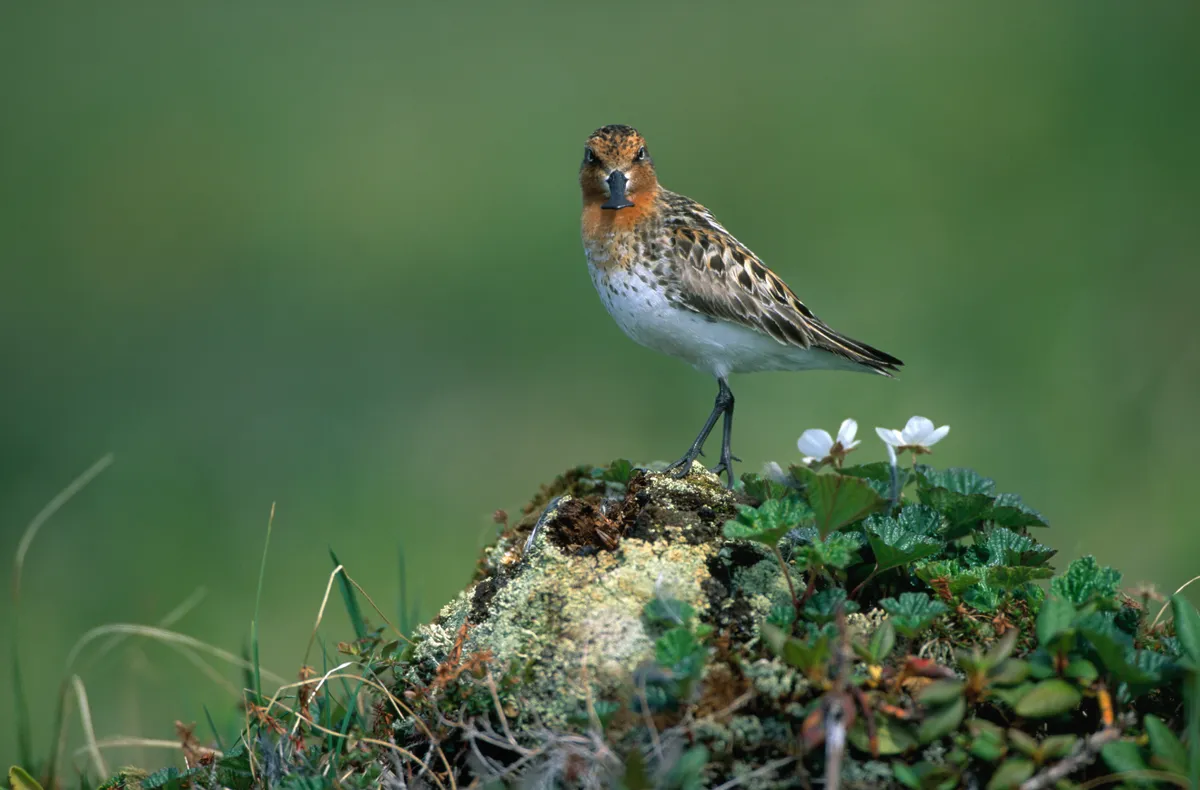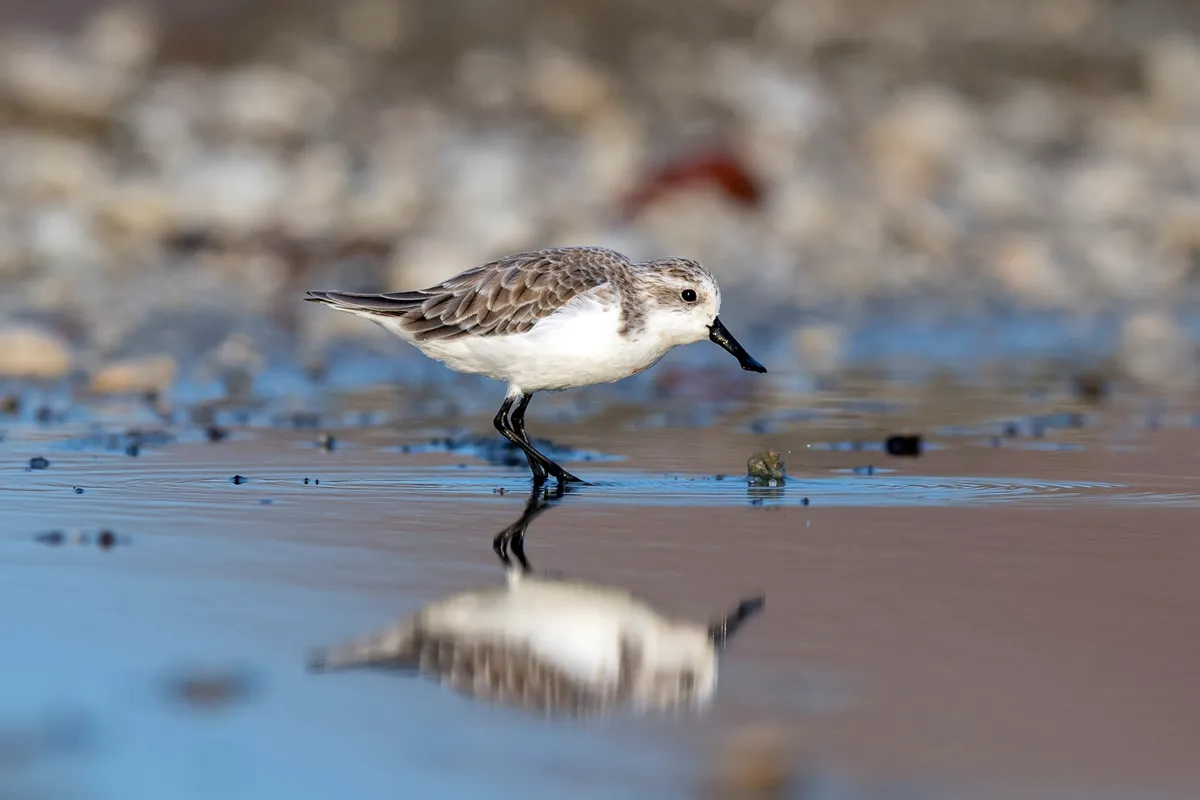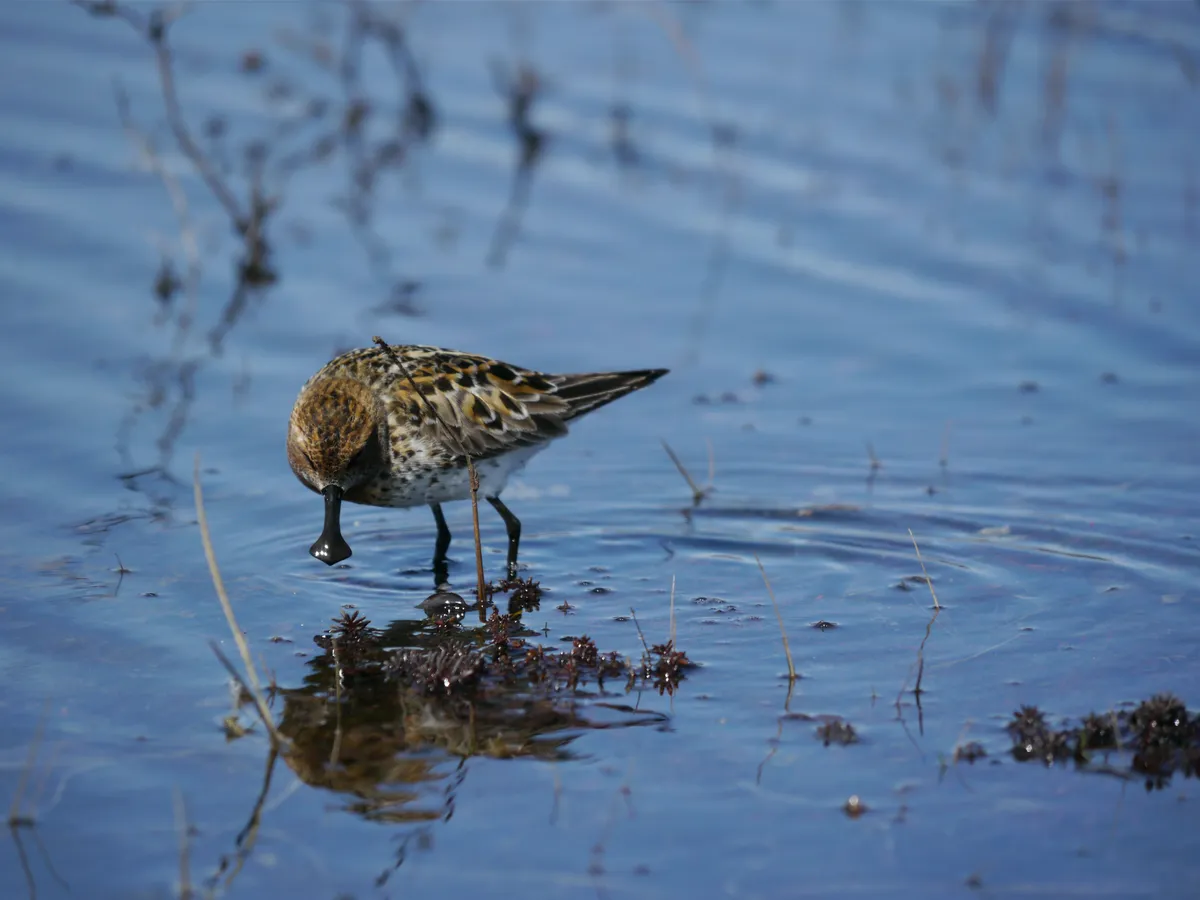Rarely is a name so appropriate, for the bills of spoon-billed sandpipers really do look like little spoons! These unique little birds are sometimes called “spoonies”, and use their utensil-esque appendages to poke around sand, mudflats, and other shallow wetland areas, looking for small invertebrates to feed on.
They can be seen wading through the shallows, moving their bills from side to side. Sadly, however, there are now few to be seen. They are perilously close to extinction, with fewer than 200 pairs left worldwide.
Read on to learn more about what is being done to save these one-of-a-kind little birds and their wetland habitats, in our expert guide by the Wildfowl and Wetlands Trust.
What is the scientific name of the spoon-billed sandpiper?
The scientific name of the spoon-billed sandpiper is Calidris pygmaea.
The spoon-billed sandpiper belongs to the Scolopacidae family which includes sandpipers, snipes, and phalaropes.
How to identify spoon-billed sandpipers
Spoon-billed sandpipers or "spoonies' are petite little waders about the size of small mouse. They have stilt-like legs and a speckled chest. Their most distinctive feature is their famous spoon-shaped bill that gives them their name.
Breeding adults have a red-brown head, neck and breast with dark brown streaks, whereas non-breeding adults lack the reddish colouration. They have white underparts and spindly black legs.


Where do spoon-billed sandpipers live?
These tiny little birds are capable of flying huge distances. One of our tracked spoonies was recorded flying 2,400km non-stop for 51 hours.
Spoonies breed on the Chukotsk and Kamchatka peninsulas in the Russian Far East, migrate through Russia, Japan, North Korea, South Korea and the Jiangsu coast of China to winter in southern China, Bangladesh, Myanmar and Thailand, 8,000km from their breeding grounds.
What threats do spoon-billed sandpipers face?
Spoon-billed sandpipers are listed as Critically Endangered on the IUCN Red List.
The species’ long-term decline is likely linked to widespread habitat loss and degradation, particularly the reclamation of inter-tidal staging sites in the Yellow Sea. Trapping on their wintering grounds appears to be a key reason for the acceleration in the rate of decline however.
Some evidence suggests that most young birds remain on their non-breeding grounds for their first two years, and are therefore likely to be more vulnerable to trapping.

What is being done to help spoon-billed sandpipers?
Conservationists have a multipart strategy to ensure as many spoon-bills as possible survive and thrive, focusing on fledgeling survival, migration monitoring, habitat protection, and captive breeding.
Giving them a headstart in life
Only three chicks out of every 20 eggs laid make it to adulthood. Conservationists have been working in the birds’ breeding grounds in remote Arctic Russia, collecting, incubating, hatching eggs and head-rearing chicks ready for safe release once they’ve fledged. This process has helped increase the number of fledglings that survive each year by 20%.
Monitoring migration patterns
Knowing their flight paths is vital to focus conservation efforts but given the vast distances these birds travel each year, tracking their movements has been a real challenge.
However by using tiny satellite tags, small enough to attach to the birds’ feathers, experts are beginning to unravel this mystery. They’ve already discovered new wintering and moulting sites in North Korea. It is hoped new tagging data will continue to throw light on where the majority of spoonies winter and breed.

Protecting their habitats
An international effort to protect the spoonie along their known migratory path has made a powerful impact.
In 2017 the Gulf of Mottama in Myamar was awarded international protection and in 2019 the Yellow Sea wetlands received UNESCO World Heritage Site status which support millions of water birds such as at least 17 cross-continental migratory bird species on the IUCN Red List, including the critically endangered spoon-billed sandpiper.
Captive breeding programme
The world’s only captive flock of spoonies, known as an ‘ark’ population was established to protect the species from extinction in 2011 at WWT Slimbridge.
After eight years of trying to carefully recreate their extreme lifestyle in the wild, scientists finally celebrated a breakthrough in 2019 when two spoonie chicks hatched. The spoonies continue to thrive and there is hope the breeding team can build on their success.
Please note that external videos may contain ads:
WWT: Spoon-billed Sandpiper Conservation Breeding
The Wildfowl & Wetlands Trust (WWT) is a charity working to conserve, restore and create wetlands, and inspire everyone to value the amazing things healthy wetlands can do for us.
WWT works across the UK and the world to conserve our wetlands for wildlife and people, to save critically endangered species from extinction, and work with communities around the world who depend on wetlands and inspire people to take care of nature.
Main picture: Spoon-billed sandpiper in Russia. © Wildfowl and Wetlands Trust
